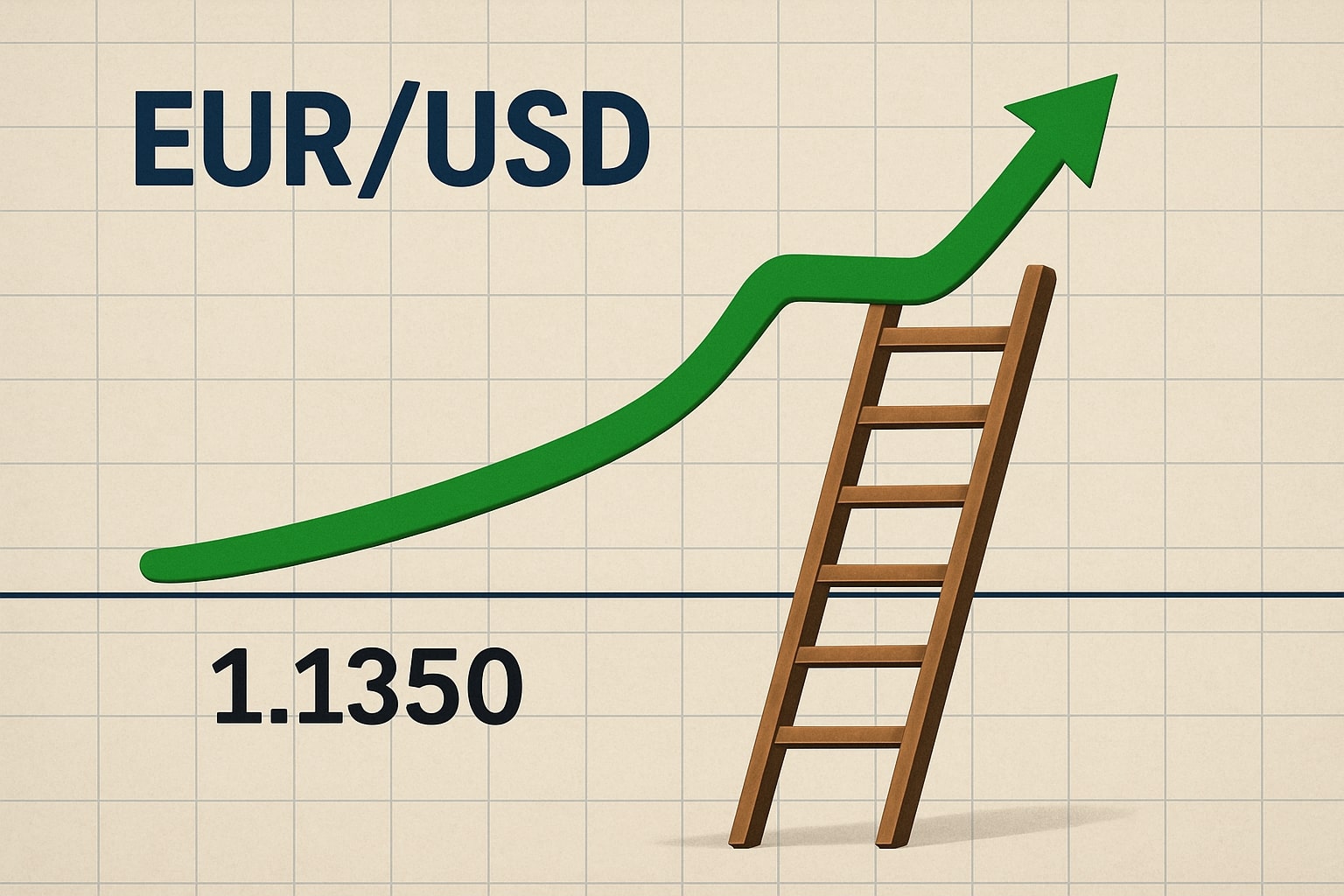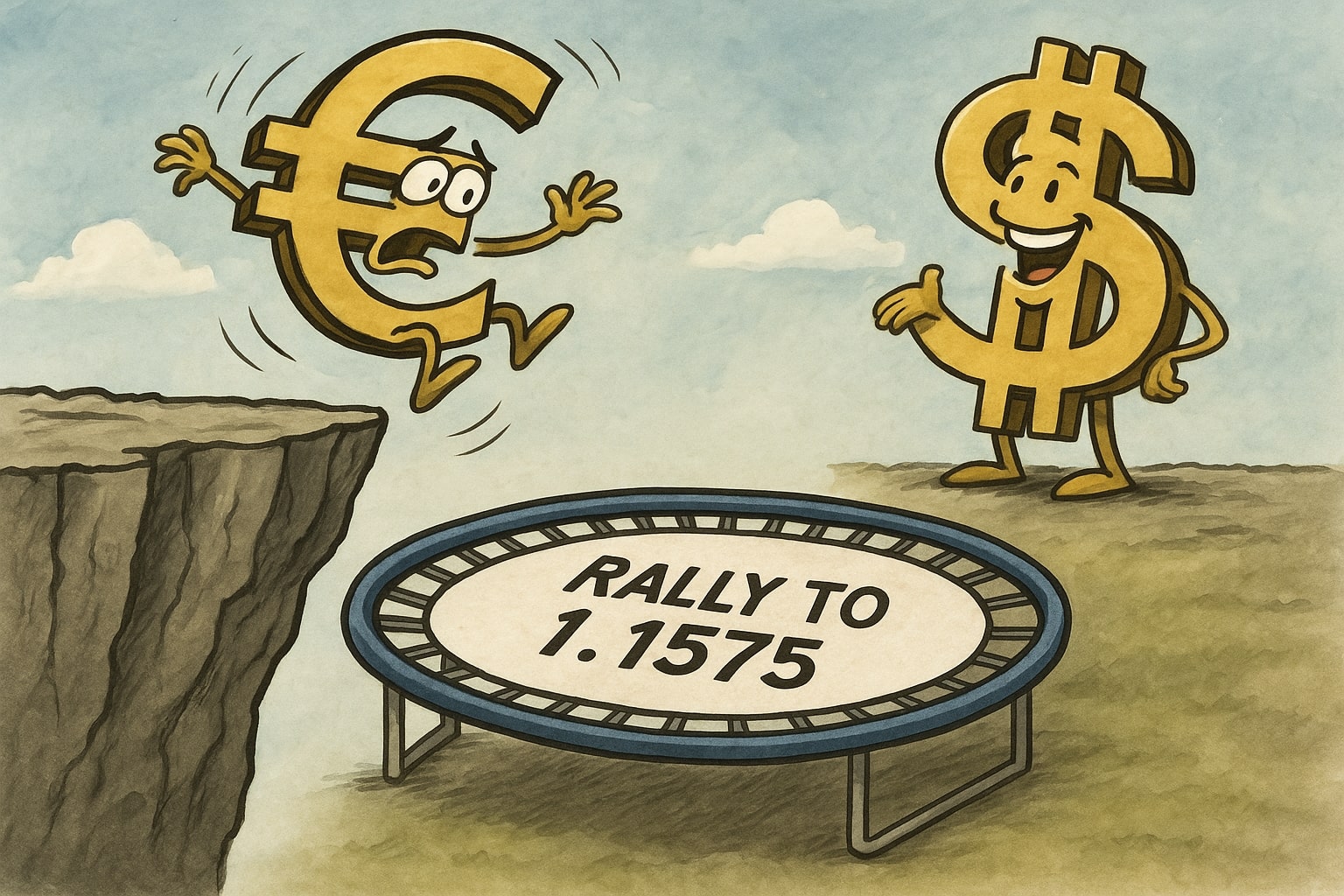
EUR/USD Strengthens at 1.0880 Amid Dollar Weakness: Election Drama and Key Economic Events Loom
With the U.S. dollar under pressure from election uncertainty, EUR/USD eyes crucial resistance at 1.0930. Investors brace for volatility as Fed rate decisions and eurozone data shape the pair’s outlook | That's TradingNEWS
EUR/USD Analysis: Market Dynamics Amid Political and Economic Turmoil
Current Market Status: EUR/USD Struggles Around 1.0880
The EUR/USD pair has shown a mild upward momentum, trading around 1.0880 in early European sessions, as uncertainty looms over the U.S. presidential election and an anticipated Federal Reserve interest rate cut. The U.S. Dollar Index (DXY) has softened, currently trading near 103.81, following a dip in factory orders and subdued investor sentiment. This has provided a degree of support for the euro, helping it maintain a slightly bullish tone, despite broader bearish signals.
Technical Outlook: Support and Resistance Levels in Focus
The technical landscape for EUR/USD remains complex, influenced heavily by short-term resistance and support levels:
- Immediate Resistance: Positioned at 1.0931, close to the 100-day Exponential Moving Average (EMA).
- Upside Resistance Targets: If EUR/USD breaks above 1.0931, it may test the upper boundary at 1.0951, with further potential at the psychological level of 1.1000.
- Key Support Levels: Initial support is at 1.0800, with a secondary support zone between 1.0770 and 1.0760, a critical area coinciding with the October 24 low and the Bollinger Band’s lower limit.
The Relative Strength Index (RSI) currently sits near 47.25, signaling a slight bearish momentum, yet remaining above the oversold threshold. The pair’s path of least resistance remains to the downside unless it successfully breaks above the 100-day EMA.
Political Climate and Dollar Sentiment: Impact of U.S. Elections on EUR/USD
The highly contested U.S. presidential election is exerting significant pressure on the U.S. dollar. With the EUR/USD pair buoyed by investor hesitancy toward the greenback, markets are anticipating potential outcomes. Analysts speculate that a "Republican clean sweep" could see a moderate rise in the dollar. In contrast, a victory for Democratic candidate Kamala Harris may put further downward pressure on the USD, especially if Democrats secure a strong congressional presence.
According to ING Bank, a Harris victory could lead to an amplified dollar decline due to anticipated fiscal policy shifts and expanded spending, both of which are expected to weaken the dollar. Conversely, a Trump victory could bolster the dollar, although not drastically unless Republicans control both the Senate and House.
Key Economic Indicators: PMI and Trade Balance Reports to Set the Tone
The U.S. Trade Balance report, projected to show a deficit of -$83.8 billion, and the ISM Services PMI, expected at 53.8, are essential economic indicators that will shape dollar sentiment. Weakening PMI results could reinforce the dovish stance anticipated from the Federal Reserve, adding further volatility to EUR/USD. Similarly, any deterioration in trade deficit figures will likely weigh on the dollar, increasing the EUR/USD pair’s bullish prospects.
European Economic Factors: Weaker French and Spanish Data Weigh on Euro
In Europe, economic releases have been mixed, with French Industrial Production contracting by -0.5% in October, a sharp reversal from the previous month’s 1.4% growth, and Spanish unemployment rising by 26.5K. Both of these data points suggest economic strains that could limit the euro's upward movement if additional fiscal policies are not introduced. Market participants will closely follow the ECOFIN meeting for any discussion on stimulus measures that may bolster the eurozone economy.
ECB and Fed Monetary Policies: Diverging Paths and EUR/USD Prospects
The European Central Bank (ECB) has recently enacted a 25-basis-point rate cut, reducing the Deposit Facility Rate to 3.25%. ECB President Christine Lagarde signaled that inflation in the eurozone may reach the target rate of 2% by 2025, while some ECB members advocate for a more cautious approach to future rate decisions, concerned about excessive deflation. In contrast, Governing Council member Fabio Panetta has cautioned that the ECB should avoid excessive hesitation, suggesting additional rate cuts could prevent inflation from dropping too low.
In the U.S., the Federal Reserve is widely expected to implement a 25-basis-point rate cut, fully priced into the market due to persistent disinflation and labor market cooling. The Fed’s rate decision, scheduled for Thursday, will have substantial implications for EUR/USD. A dovish stance by the Fed could weaken the dollar, driving the pair higher, while any unexpected hawkish hints could support the greenback and push EUR/USD down.
Technical Indicators and Market Sentiment: Short-Term Outlook for EUR/USD
- 50-Day and 200-Day EMAs: The pair’s movement near the 50-day EMA at 1.0865 and the 200-day EMA at 1.08716 reinforces a moderately bullish sentiment. A sustained position above these levels would strengthen the upward trend, while a breach below could shift the sentiment to bearish.
- Bollinger Bands and Fibonacci Levels: EUR/USD is currently hovering near its 23.6% Fibonacci retracement level at 1.0866, suggesting limited gains without a substantial break. The 38.2% retracement level at 1.0932 serves as a critical resistance that must be surpassed for a sustained rally.
- Relative Strength Index (RSI): With the RSI at 51, the sentiment is neutral to slightly bullish. Any move above 55 could indicate stronger buying momentum, pushing EUR/USD closer to 1.0935 and potentially testing the 1.0990 resistance level.
Short-Term Catalysts: Trade, Election, and Monetary Policy Outcomes
As the U.S. election outcome approaches, investors are highly attuned to its potential implications on fiscal policy and its effect on the dollar. If the election yields a pro-dollar administration, EUR/USD could face increased resistance, especially with an active Federal Reserve meeting later in the week.
In the near term, EUR/USD is likely to trade within the 1.0850 to 1.0915 range as markets await election results, U.S. trade data, and PMI outcomes. Should these data points align with expectations of a weakening dollar, EUR/USD may edge higher. However, bearish pressures may resume if the dollar strengthens or if eurozone economic data fails to meet market expectations.
Broader Economic Implications: Dollar Strength Amid Geopolitical Factors
Given recent shifts in political and economic landscapes, EUR/USD remains sensitive to broader geopolitical developments. Factors like the trade imbalance in the U.S. and the ECB’s cautious stance on rate cuts add layers of complexity to the currency pair’s movement. A weakening eurozone industrial sector and increased unemployment in Spain further underscore potential headwinds for the euro.
In summary, EUR/USD is expected to remain sensitive to political events, economic indicators, and central bank policies in both the U.S. and Europe. While the pair has shown moderate resilience near 1.0880, upcoming data releases, the Federal Reserve’s rate decision, and U.S. election outcomes will be pivotal in determining the EUR/USD trajectory.
Support Levels:
- Initial Support: 1.0865
- Secondary Support: 1.0820
- Tertiary Support: 1.0770
Resistance Levels:
- Initial Resistance: 1.0935
- Secondary Resistance: 1.0990
- Tertiary Resistance: 1.1020
Conclusion: EUR/USD Awaits Direction Amid Key Market Events
The EUR/USD currency pair stands at a crucial juncture, with political uncertainties, economic indicators, and central bank policies poised to influence its course. Short-term resistance at 1.0931 and immediate support at 1.0800 create a defined range within which the pair is likely to trade until a clearer direction emerges post-election. While technical indicators suggest mild bullishness, the broader outlook will largely depend on geopolitical developments, economic data, and monetary policy stances in both the U.S. and Europe.
















